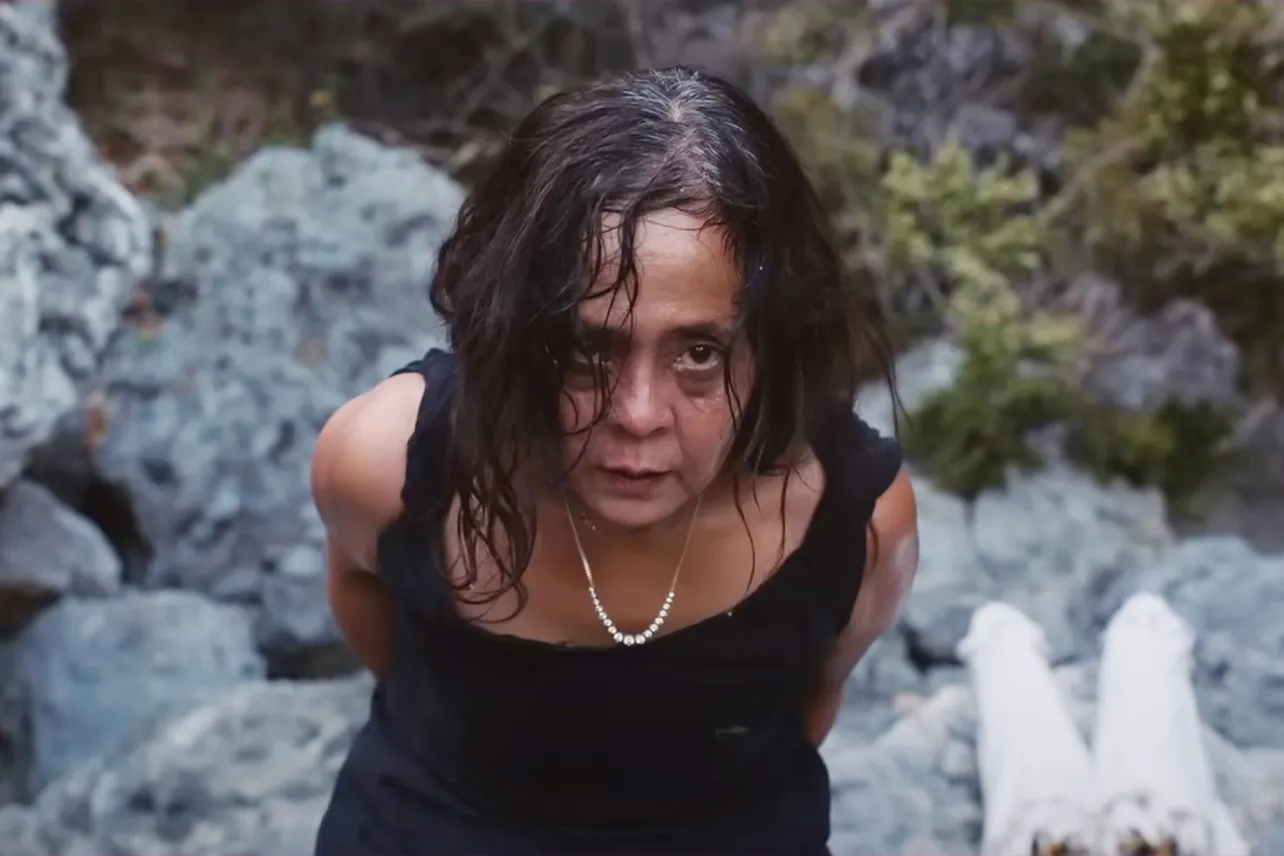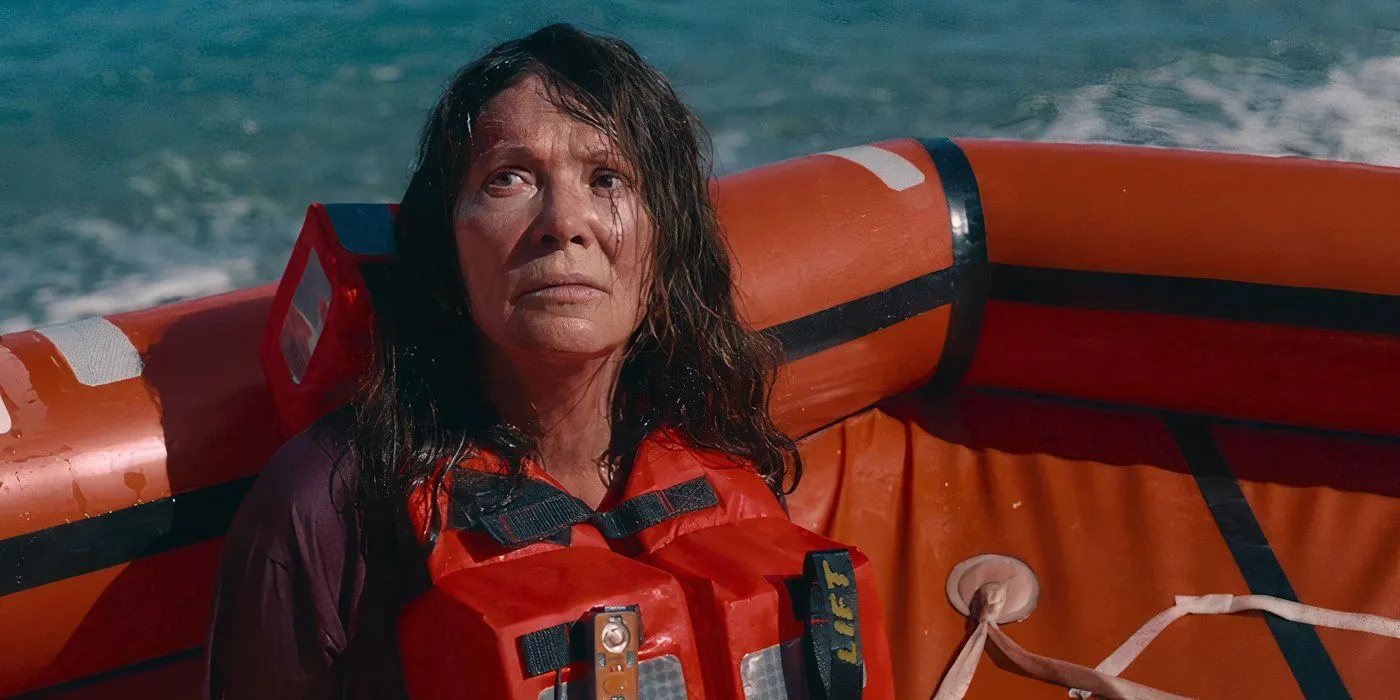The film Triangle of Sadness by Ruben Östlund caused serious buzz back in 2022, clinching the Palme d’Or at Cannes and even landing nominations for Best Picture, Best Director, and Best Original Screenplay at the Oscars.
With its recent entry into the Netflix library, the film has started gaining new attention, giving those who missed it earlier a fresh chance to watch and understand what made it such a topic of discussion. The story features Harris Dickinson and Charlbi Dean playing two models who receive an invitation to join a luxurious cruise.

Harris unfortunately passed on not long after the film’s debut. Onboard, they mingle with several strange, often obnoxious, wealthy passengers. Woody Harrelson also appears as the ship’s drunken captain, who proudly embraces Marxist ideologies.
One particular evening during dinner, events quickly spiral into absurd chaos after the ship finds itself in rough waters. The audience gets served a mix of exaggerated comedy and crude humour, which only gets worse when pirates later strike the boat.
Eventually, the story reaches its final part when those who survive the disaster find themselves stranded on an island. The usual social order takes a dramatic turn—those wealthy passengers now completely depend on Abigail (played by Dolly De Leon), a cleaning woman with solid survival skills whom they had earlier looked down on.
Abigail’s ending explained: Was it all a trap?
As the group adjusts to life on the island, Abigail begins to understand just how much influence she now wields and decides to use it to her advantage, leading up to an ending that leaves plenty of room for personal interpretation.
Thanks to her practical knowledge and control over the island’s food supply, Abigail quickly becomes the group’s leader. She starts setting conditions for food distribution and insists on being obeyed before she shares anything. Her new position comes with privileges.
She moves into a lifeboat for better sleeping arrangements and manipulates Carl (Harris Dickinson) into a sexual relationship—something that upsets his girlfriend Yaya (Charlbi Dean), who becomes jealous. Yaya then chooses to trek across the island in search of assistance, taking Abigail along.
Along the way, they stumble upon a surprising reality: they’re not stranded in a remote place after all—they’re very close to a high-end resort. Yaya becomes excited after this discovery, but Abigail does not share the same feeling.
The cleaner fears she might lose the power she recently gained if the others find out about their proximity to help. In response, Abigail quietly picks up a rock and appears ready to strike Yaya, likely planning to cover up what they found and retain her leadership role.
The film ends with ambiguity and provokes debate
The movie doesn’t reveal if Abigail goes through with the attack on Yaya. Instead, it switches to a new scene where Carl is seen running in distress, and then the closing credits start. This sudden cut leaves the conclusion entirely open to interpretation.
That lack of clarity allows each viewer to think and decide for themselves what happened. You could look at it from different sides. Killing Yaya would benefit Abigail greatly, allowing her to continue ruling the island unchallenged.

And from what we’ve seen of her behaviour so far, she’s shown she’s willing to cross moral lines to stay in charge. But at the same time, one may wonder if she would go as far as committing murder. As she raised the rock, it looked like she was hesitating. Perhaps her conscience stopped her just in time.
The film, therefore, acts like a test of how people think about human nature. Someone with a pessimistic view may believe she went through with the killing, while someone more hopeful may assume she decided against it.
Östlund later shared in an interview with The LA Times that he intended for audiences to be divided on the ending. He said, “I don’t think it is important if she kills her or not. I think the important part is, can we identify with the possibility of her doing it?
“I also had this idea where I wanted half of the viewers to want her to go ahead with the killing, while the other half would feel the opposite. “So, for me, what matters isn’t whether she does it, but rather that such a possibility exists.”
Dolly De Leon, who played Abigail, spoke to Entertainment Weekly and said she believes the audience can be trusted to create their ending. Still, she added a personal note: “I have my thoughts as the actor who portrayed Abigail.
I understand what Abigail was aiming for, and only I truly know that. I would love to answer, but honestly, my understanding shifts depending on the day.”
The question of what exactly Carl was running from—or possibly towards—is also not made clear. One explanation could be that he saw a beach vendor appear not long after Abigail and Yaya left, which gave away the fact that they weren’t far from a developed area.
It’s possible he wanted to inform them about this new clue, but it’s equally possible he sensed trouble might be brewing once the two women realised the truth about their location. Again, the audience is left to draw their conclusions.



